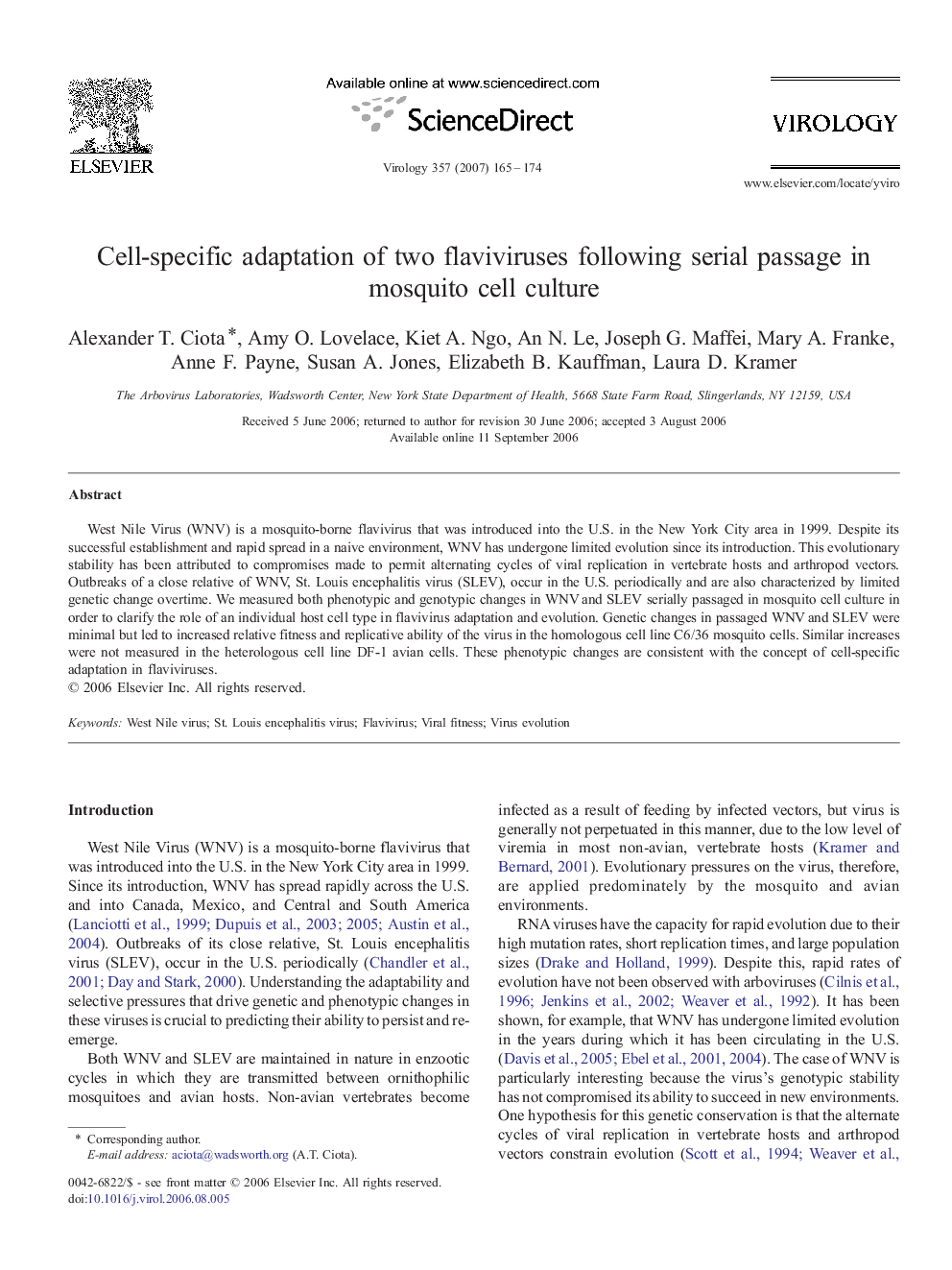| Article ID | Journal | Published Year | Pages | File Type |
|---|---|---|---|---|
| 3426312 | Virology | 2007 | 10 Pages |
West Nile Virus (WNV) is a mosquito-borne flavivirus that was introduced into the U.S. in the New York City area in 1999. Despite its successful establishment and rapid spread in a naive environment, WNV has undergone limited evolution since its introduction. This evolutionary stability has been attributed to compromises made to permit alternating cycles of viral replication in vertebrate hosts and arthropod vectors. Outbreaks of a close relative of WNV, St. Louis encephalitis virus (SLEV), occur in the U.S. periodically and are also characterized by limited genetic change overtime. We measured both phenotypic and genotypic changes in WNV and SLEV serially passaged in mosquito cell culture in order to clarify the role of an individual host cell type in flavivirus adaptation and evolution. Genetic changes in passaged WNV and SLEV were minimal but led to increased relative fitness and replicative ability of the virus in the homologous cell line C6/36 mosquito cells. Similar increases were not measured in the heterologous cell line DF-1 avian cells. These phenotypic changes are consistent with the concept of cell-specific adaptation in flaviviruses.
